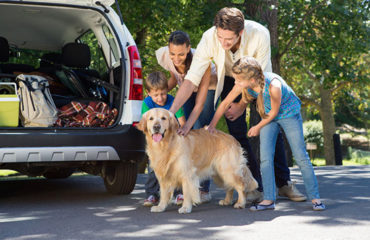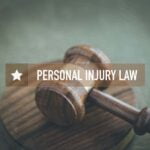Who pays for your injuries if you have been in a bicycle accident?

In Kansas, the modified comparative fault law applies to all injuries sustained in on-road accidents, including bicycle accidents. In order to recover compensation, you must be less than 50% at fault. This means that if blame is placed on you, even if it’s just 50%, you can’t recover compensation.
If you are in a bicycle accident that does not involve any fault on your part, you can seek restitution for all medical expenses as well as lost earnings. Even if your bicycle accident does not involve a motorist, but is a result of faulty road conditions, you may still be entitled to seek damages from responsible parties, including civic authorities and contractors who have done repair or construction work on the road.
In 2017, over 300 cyclists were injured and 5 were killed in accidents all over Kansas. Like all other crashes, bicycle accidents result from the involvement of motor vehicles, cyclist’s error, or roadway hazards. Depending on the circumstances of the crash, injuries can range from minor bruises and scratches to life-threatening and debilitating physical harm.
What is causing all those bicycle accidents?
Nearly 40% of all bicycle accidents involved cars, and the highest number of crashes resulted from motorists failing to yield to the bicyclists. Take a look at some of the other crash factors and the number of accidents attributed to them:
- Over 12% due to vehicles turning into the way of cyclists.
- Over 11% due to not yielding right of way to bicyclists in residential areas (these accidents usually involve children).
- Over 8% due to motorists misjudging the distance when overtaking the cyclists and crashing into the bicycle.
- Nearly 7% due to cyclists erroneously turning into the path of the motorists.
- About 16% due to cyclists failing to yield to motorists.
About 20% of all bicycle accidents are caused by distracted driving, including drunk motorists crashing into the smaller vehicle, bicyclists not being seen in the blind spot of a car that is backing up; motorists/bicyclists running the stop sign, and by cyclists crashing into a suddenly opened car door or a stationary object.
What is the scope for recovery after a bicycle accident?
Insurance companies will always make light of your injuries and blame you for every factor that eventually led to the accident and your injuries. In fact, coverage providers are known to frequently dispute the on-road rights of cyclists.
Also, because you are the smallest participant in this accident, many insurance providers will not take the claims of the cyclist seriously, unless the bicycle rider has legal representation. You will need the support of an experienced attorney who has a track record of fighting and winning bicycle accident compensation cases. A good lawyer will know how to prove that the cyclist was the victim and thus deserves restitution.
Preventing bicycle crashes and injuries
- Safety first: While bicycle safety gear like helmets and knee pads cannot prevent a crash, they can significantly lower the risk of suffering from serious injuries.
- Ride on the right: It is crucial to go with the traffic and not against it, when on the road. Limit yourself to the right side of the roadway and preferably stay within a two-feet distance of the edge of the roadway or the curb. This will put more space between yourself and the fast moving cars on the road while leaving room to maneuver your bike.
- Stay on the shoulders: Where possible, ride on paved shoulders, which are typically greater than 3 feet in width, and have enough space for you to safely and comfortably ride your bike.
- Predictability is equal to safety: Making sudden and unanticipated moves while on the road does not bode well for anybody. Avoid surprising other motorists or pedestrians with sudden moves. Instead, play it safe by holding your line.
- Arm signals work even for bicyclists: Letting people know about your intentions with arm signals is one of the simplest and most effective ways to make life easy for others on the road. Let others know when you intend to turn and stop.
- Riding together: If riding in a group, always travel in single file on the right side of the road. Even when you have room for side by side riding, it’s best to not overlap the wheels.
- Sharing the road with others: Pedestrians always have the right of way. Although cars are supposed to yield to you, this does not mean that every motorist will follow this rule. As far as possible, take charge of your own safety on the road by focusing 100% on your riding and the vehicles around you.
- Visibility is the key to safety: Bright colored clothing, reflectors on the bike, and a white light that has a visibility range of 500 feet, will help the motorists to spot you before it’s too late.
DeVaughn James Injury Lawyers has years of experience representing clients injured in bicycle accidents. We have won millions of dollars in compensation for injury victims and have a consistent track record of recovering fair settlements for our clients. It is your right to seek compensation for the physical and emotional trauma that you have suffered. DeVaughn James Injury Lawyers will make sure that your right to restitution is protected and upheld!









